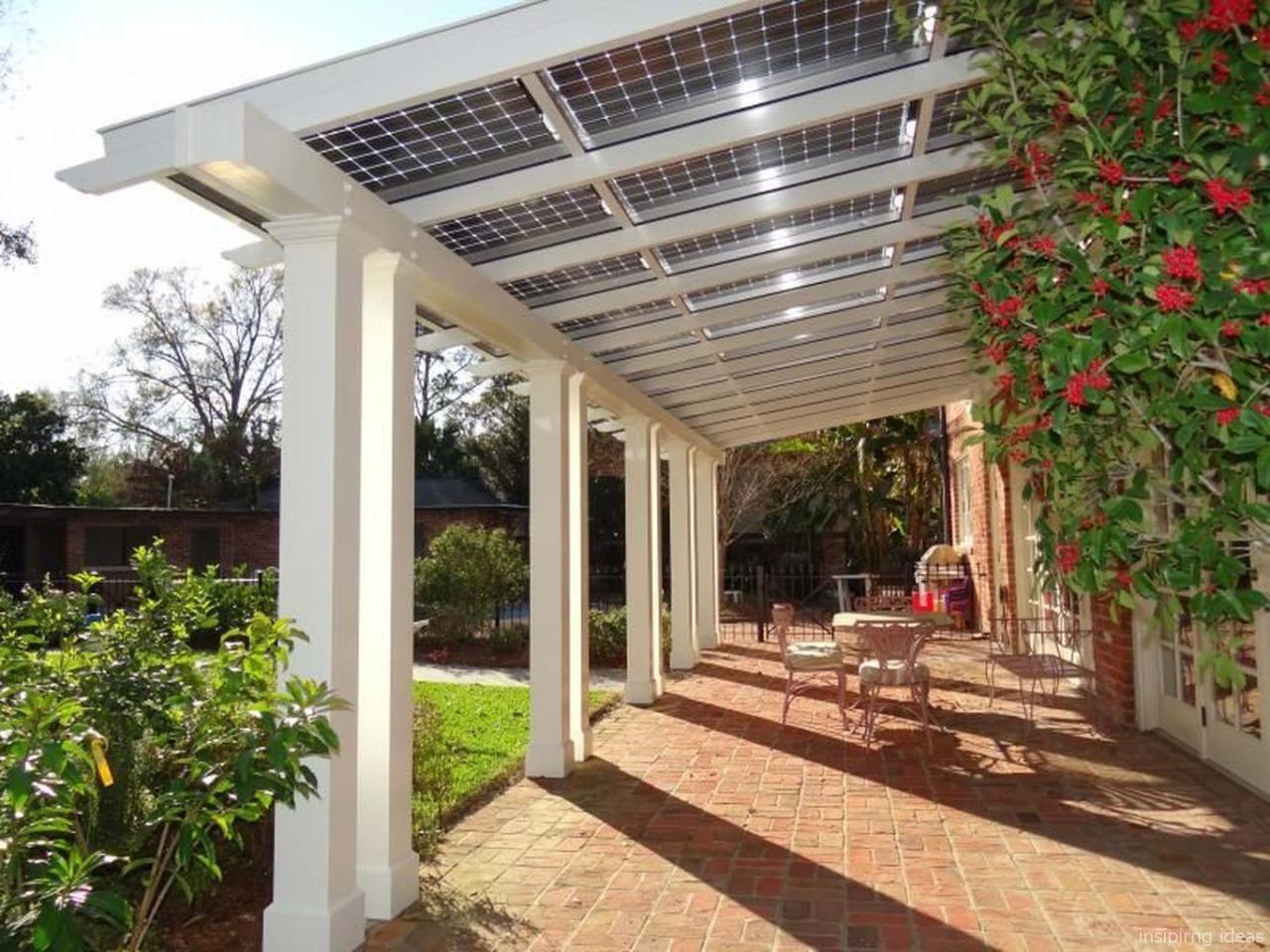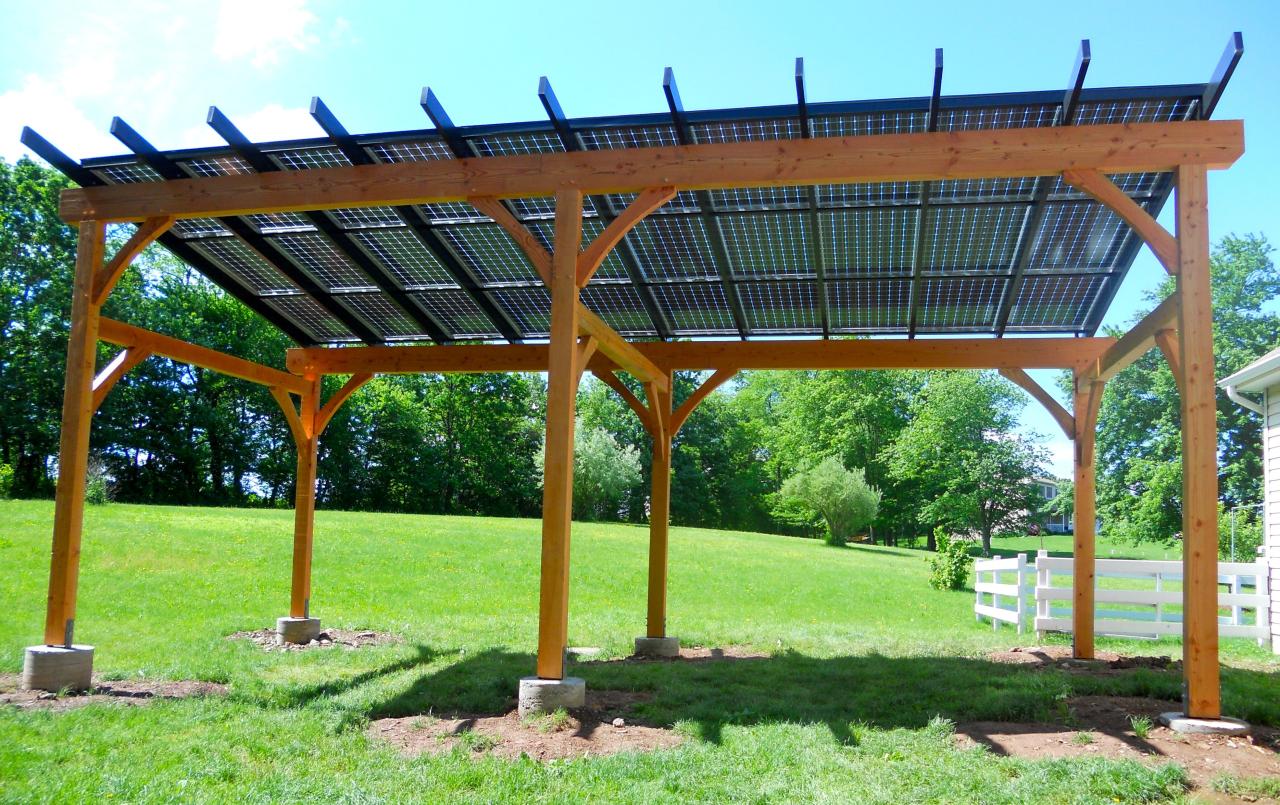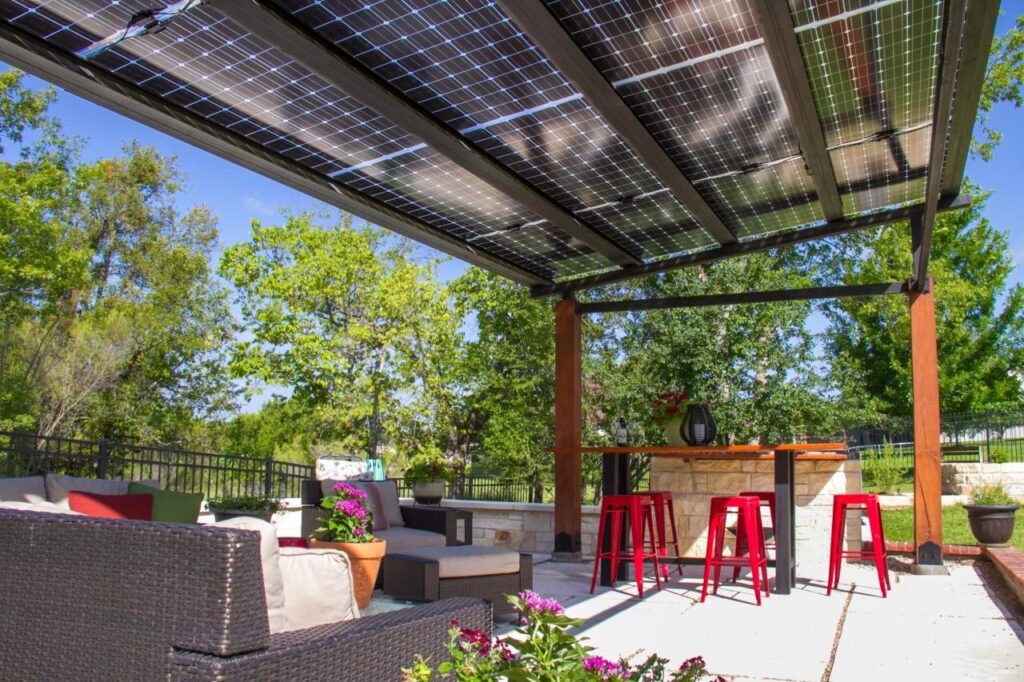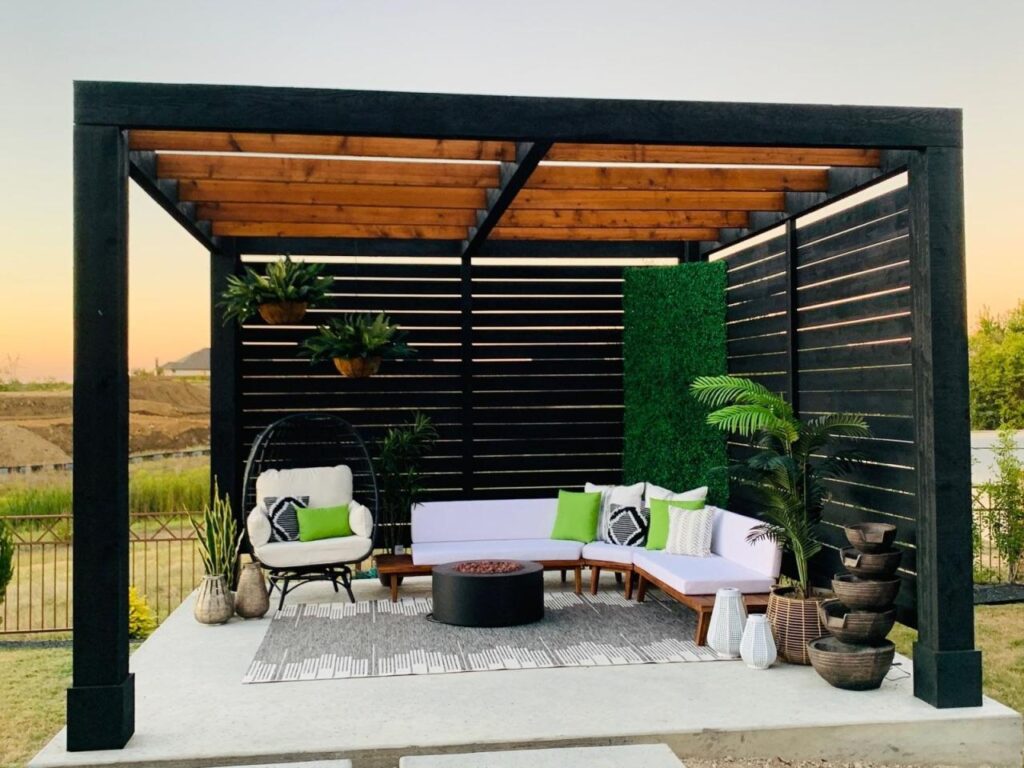Solar pergola design weaves together the threads of functionality and aesthetics, creating an outdoor oasis that generates energy while enhancing your living space. Embark on a journey to explore the intricate details that shape these structures, from their structural elements to their decorative touches.
As you delve into this guide, you’ll discover the art of harmonizing design elements, maximizing solar energy production, and incorporating decorative accents to create a pergola that seamlessly blends with its surroundings and reflects your personal style.
Design Elements
The design of a solar pergola should complement the surrounding landscape and architectural style. Several design elements should be considered, including size, shape, materials, and color.
Popular design styles for solar pergolas include modern, traditional, and rustic. Modern pergolas often feature clean lines and geometric shapes, while traditional pergolas may incorporate more ornate details. Rustic pergolas are often made from natural materials such as wood or stone.
Size and Shape
The size and shape of the pergola will depend on the available space and the desired level of shade. Solar pergolas can be rectangular, square, or round. They can also be customized to fit irregular spaces.
Materials
Solar pergolas can be made from various materials, including wood, metal, and vinyl. Wood is a popular choice for its natural beauty and durability. Metal pergolas are strong and durable but can be more expensive than wood pergolas. Vinyl pergolas are a low-maintenance option that is available in a variety of colors.
Color
The color of the pergola should complement the surrounding landscape and architectural style. Neutral colors such as white or gray can match any décor, while darker colors such as black or brown can create a more dramatic look.
Functionality
A solar pergola serves various functional purposes, combining aesthetics with practicality. It offers shade from the sun, generates renewable energy, and creates a comfortable outdoor living space.
To optimize energy production, consider the pergola’s orientation and tilt angle. South-facing pergolas receive maximum sunlight, while a tilt angle of 30-45 degrees typically maximizes solar energy capture.
Selecting Solar Components
Choosing the right solar panels and electrical components is crucial for the desired energy output. Consider factors such as panel efficiency, wattage, and the number of panels needed. An electrician can assist in determining the appropriate system size and components to meet your energy requirements.
Construction: Solar Pergola Design
The construction of solar pergolas involves various methods, including freestanding, attached, and rooftop installations. Understanding these methods and their specific requirements is crucial for ensuring a safe and durable structure.
Before embarking on the construction process, it is essential to conduct thorough site preparation, ensuring a stable and level foundation. This may involve excavation, leveling, and compacting the soil or installing concrete footings. Proper electrical wiring is also vital, adhering to electrical codes and safety regulations.
Freestanding Solar Pergolas
Freestanding solar pergolas are independent structures that do not require attachment to a building or other support. They offer flexibility in placement and can be installed in open areas or gardens. The foundation for freestanding pergolas typically consists of concrete piers or footings, providing stability and support for the structure.
Attached Solar Pergolas
Attached solar pergolas are connected to an existing building, utilizing the wall or roof as a support. This type of installation is ideal for maximizing space utilization and providing shade or shelter to patios or decks. The attachment method involves securing the pergola’s frame to the building’s structure, ensuring a sturdy and weather-resistant connection.
Rooftop Solar Pergolas
Rooftop solar pergolas are installed on the roof of a building, providing a unique combination of shade and energy generation. They are typically designed to withstand wind and snow loads, ensuring structural integrity and longevity. The installation process involves securing the pergola’s frame to the roof’s structure, ensuring proper drainage and weatherproofing.
Maintenance and Inspection, Solar pergola design
Regular maintenance and inspection are crucial for ensuring the longevity and performance of solar pergolas. This includes cleaning the solar panels, checking electrical connections, and inspecting the structure for any signs of wear or damage. Proper maintenance can extend the pergola’s lifespan, maximizing its energy production and providing continued shade and shelter.
Aesthetic Considerations
Incorporating decorative elements into a solar pergola’s design can elevate its visual appeal and transform it into a stunning outdoor focal point. By carefully considering lighting, trellises, and climbing plants, homeowners can create a harmonious outdoor living space that complements their home’s architectural style and personal preferences.
Lighting
Strategic lighting can enhance the pergola’s ambiance and extend its usability into the evening hours. String lights, lanterns, or recessed lighting can create a warm and inviting atmosphere, while spotlights can highlight specific architectural features or landscaping elements. Consider using dimmable lights to adjust the brightness and create different moods.
When designing a solar pergola, it’s important to consider the cost. Solar pergola cost can vary depending on the size, materials, and features. However, the investment in a solar pergola can pay off in the long run by reducing energy bills and increasing the value of your home.
With careful planning and consideration, you can create a solar pergola design that meets your needs and budget.
Trellises and Climbing Plants
Trellises provide a framework for climbing plants, adding vertical interest and greenery to the pergola. Choose plants that complement the pergola’s style and provide shade, privacy, or visual interest. Consider using evergreen plants for year-round greenery or flowering vines for seasonal color.
Cohesive Outdoor Living Space
To create a cohesive outdoor living space around the pergola, consider the furniture, accessories, and landscaping. Choose furniture that is comfortable, weather-resistant, and complements the pergola’s design. Add outdoor rugs, cushions, and throw pillows to create a cozy and inviting atmosphere. Enhance the space with potted plants, sculptures, or water features to add visual interest and create a relaxing ambiance.
Color, Texture, and Patterns
The use of color, texture, and patterns can significantly impact the pergola’s aesthetic appeal. Choose colors that complement the home’s exterior and create a desired ambiance. Consider using contrasting colors to highlight architectural features or create visual interest. Add texture through the use of different materials, such as wood, metal, or fabric. Incorporate patterns through trellises, fabrics, or accessories to add depth and visual interest to the space.
Case Studies
Real-world examples of well-designed solar pergolas demonstrate the practical applications and benefits of this innovative design. These case studies provide valuable insights into the design process, construction methods, and functionality of solar pergolas, highlighting both their advantages and challenges.
Residential Solar Pergola in California
A contemporary residence in California features a solar pergola that seamlessly integrates with the home’s architectural style. The pergola’s sleek aluminum frame supports photovoltaic panels that generate electricity for the home, while the polycarbonate roof provides ample shade and protection from the elements. The pergola’s integrated LED lighting system illuminates the outdoor space at night, creating a warm and inviting ambiance.
The design team faced the challenge of incorporating the solar panels into the pergola’s aesthetics without compromising its functionality. They opted for high-efficiency monocrystalline solar panels that blend seamlessly with the roof’s color, maintaining the pergola’s clean lines and modern appearance.
Commercial Solar Pergola in Texas
A large commercial building in Texas utilized a solar pergola to provide shade and renewable energy. The pergola’s massive steel frame supports a canopy of solar panels that generate electricity for the building’s common areas and electric vehicle charging stations. The pergola’s design incorporates a rainwater collection system that channels rainwater into a cistern for irrigation purposes, demonstrating the sustainability of the project.
The engineers faced the challenge of designing a structure that could withstand the high winds and storms common in the region. They employed reinforced steel beams and a durable membrane roof to ensure the pergola’s stability and longevity.
Final Summary
In the realm of solar pergola design, the possibilities are endless. Whether you seek a modern sanctuary, a rustic retreat, or a traditional gathering place, this guide empowers you to create an outdoor haven that fulfills your every need. Embrace the interplay of functionality and aesthetics, and let your solar pergola become a testament to your creativity and environmental consciousness.









2 thoughts on “Solar Pergola Design: A Guide to Functionality and Aesthetics”